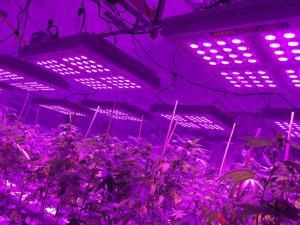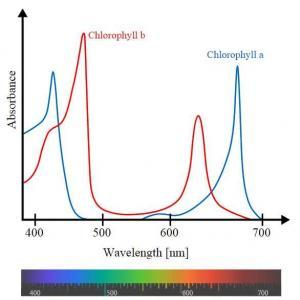Blue and red spectrum LEDs are the foundation of most LED grow lights and the resultant hue is sometimes referred to as blurple. There are good reasons why red and blue spectrum LEDs are the foundation of most LED grow lights and this post is the first in a series aiming to better understand the science behind LED grow lights.

Chlorophyll
Understanding why red and blue LEDs feature so prominently in LED grow lights starts with understanding chlorophyll in plants. Chlorophyll is vital for photosynthesis and allows plants to absorb energy from light. Plants are perceived as green because chlorophyll mainly absorbs the blue and red wavelength and reflects the green. The figure below plots the absorbance by the wavelength of light and illustrates the high absorbance of red and blue light in plants.

Most green land plants have two main types of Chlorophyll – Chlorophyll A and Chlorophyll B. Chlorophyll A is the primary active pigment (chemical) in photosynthesis. Chlorophyll B is called an accessory pigment. There are many other classifications of Chlorophyll other than A and B, but an in depth discussion of their functions are not necessary at this point.
The spectral range (wave band) from blue to red light is called photosynthetically active radiation (PAR). The spectral range of solar radiation from 400 to 700 nanometers is therefore the range of light that photosynthetic organisms are able to use most efficiently in the process of photosynthesis.
PAR is discussed in more detail in the next post.
References in order of appearance:
- Carter JS (1996). “Photosynthesis”. University of Cincinnati.
- McCree, Keith J. (1981). “Photosynthetically active radiation”.
- UPRtek Horticultural Handbook.
